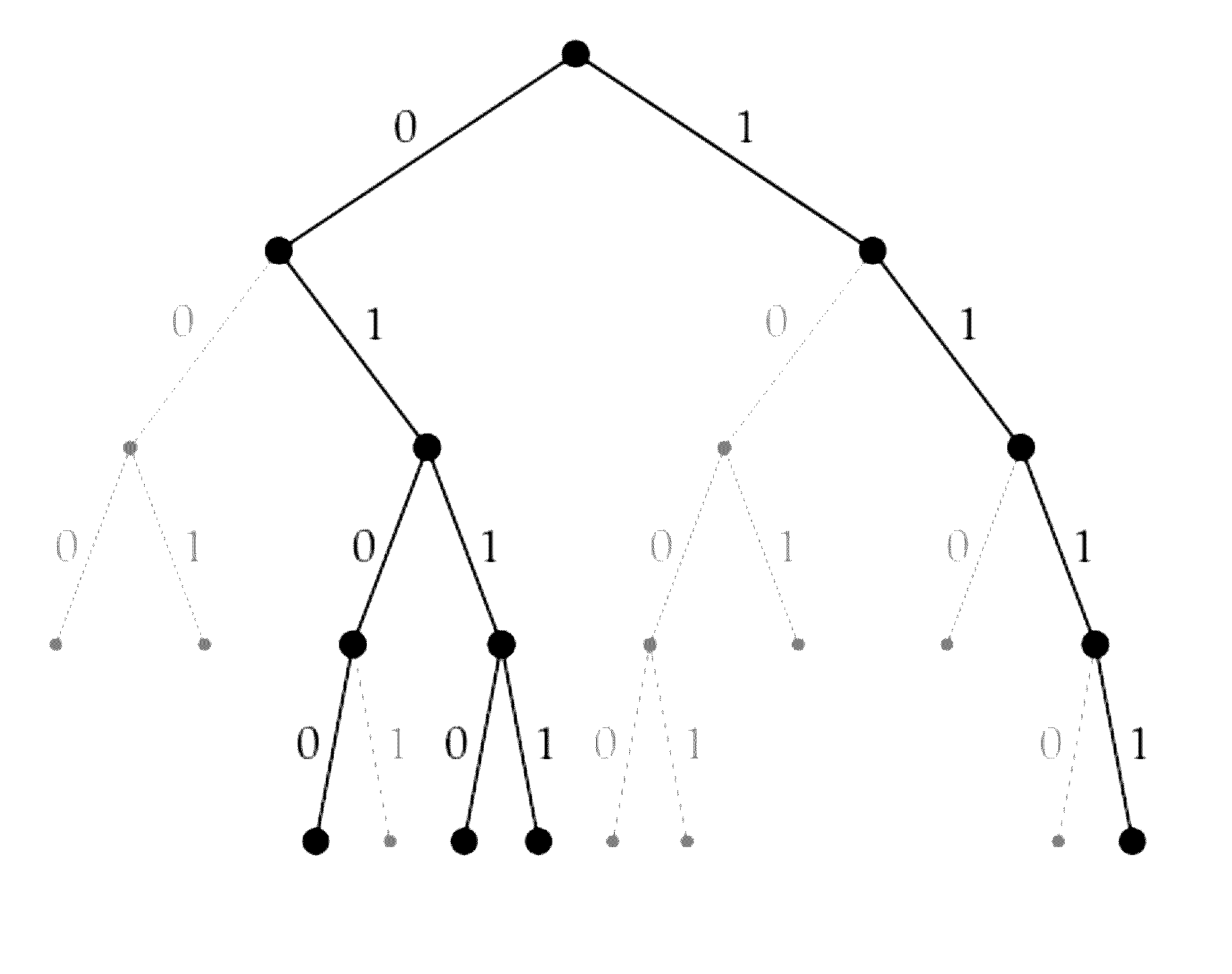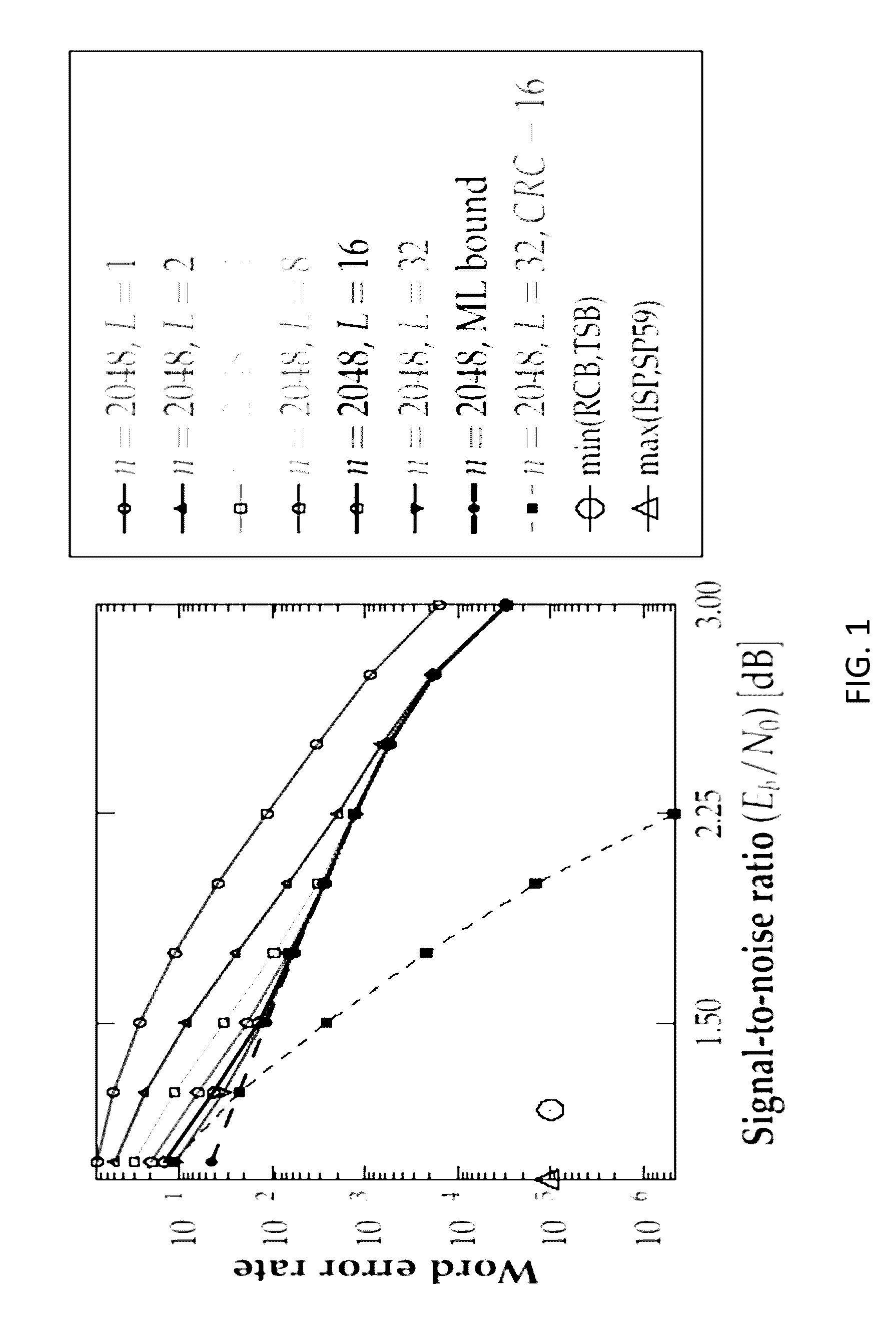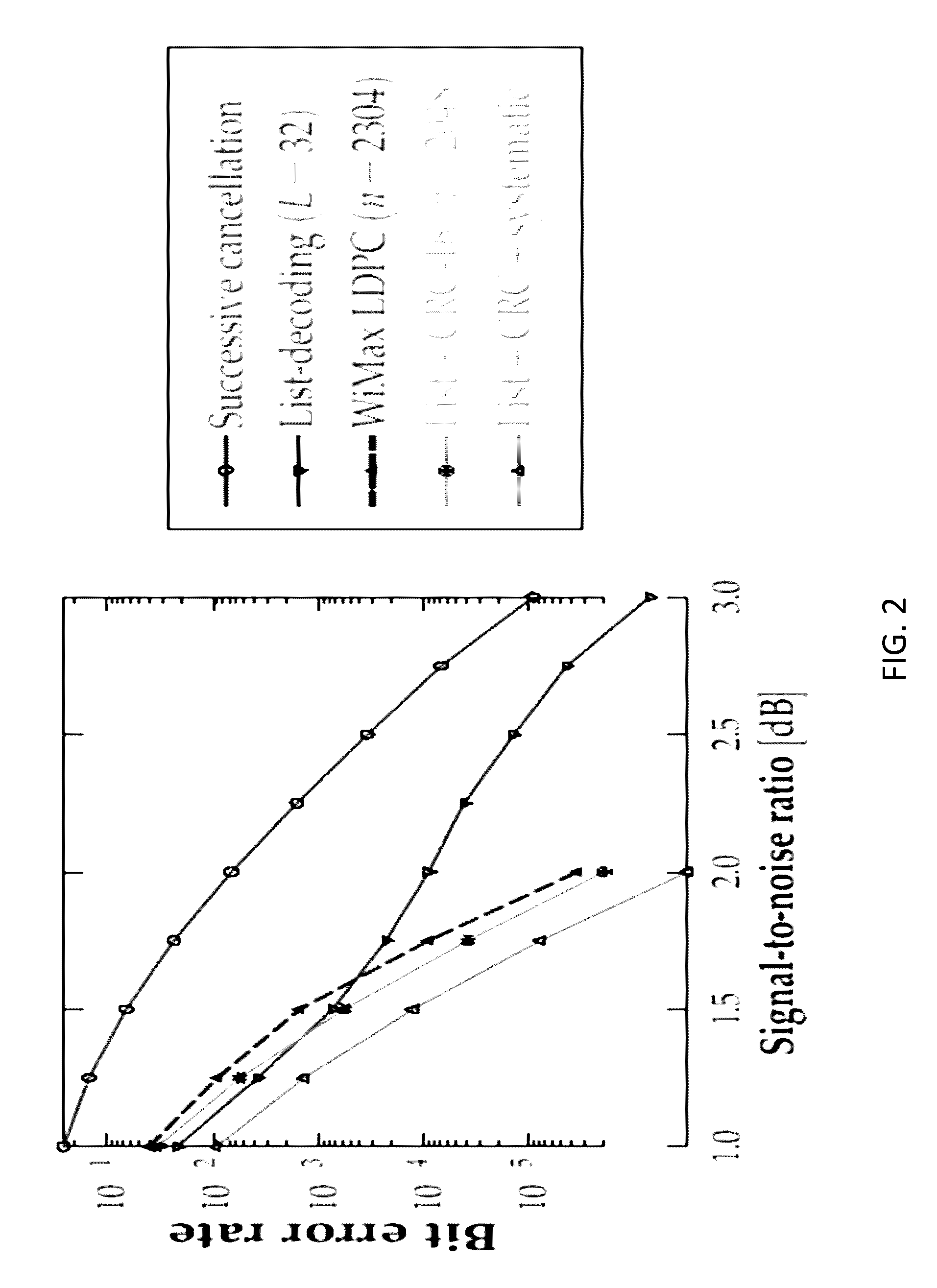ECC polar coding and list decoding methods and codecs
a polar code and list decoding technology, applied in the field of information coding and decoding, can solve the problems of polar codes not being widely implemented, short to moderate block lengths are not good, and the comparison of the decoding algorithms of reed-muller and polar codes is difficul
- Summary
- Abstract
- Description
- Claims
- Application Information
AI Technical Summary
Benefits of technology
Problems solved by technology
Method used
Image
Examples
Embodiment Construction
[0015]The present inventors have recognized that drawbacks in polar codes at short to medium block lengths arises from inherent weaknesses of the code itself at these lengths or from the fact that the successive cancellation (SC) decoder employed to decode them is significantly degraded with respect to maximum likelihood (ML) decoding performance. These two possibilities are complementary, and so both may occur.
[0016]Disclosed are methods and their computer implementation that greatly improve the error-correcting performance of polar codes. Polar codes are a family of error correcting codes that facilitate the transfer of information from a transmitter to a receiver over a noisy medium (e.g., as happens in cell phones, computer hard disks, deep-space communication, etc). The invention employs a new decoding method for polar codes as well as a modification of the codes themselves. The method has been fully implemented and tested. The resulting performance is better than the current s...
PUM
 Login to View More
Login to View More Abstract
Description
Claims
Application Information
 Login to View More
Login to View More - R&D
- Intellectual Property
- Life Sciences
- Materials
- Tech Scout
- Unparalleled Data Quality
- Higher Quality Content
- 60% Fewer Hallucinations
Browse by: Latest US Patents, China's latest patents, Technical Efficacy Thesaurus, Application Domain, Technology Topic, Popular Technical Reports.
© 2025 PatSnap. All rights reserved.Legal|Privacy policy|Modern Slavery Act Transparency Statement|Sitemap|About US| Contact US: help@patsnap.com



